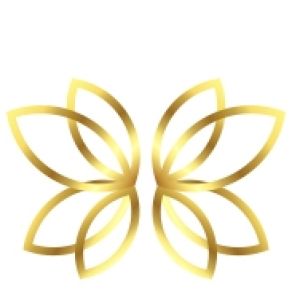How to Start a Jewelry Business Your Step-by-Step GuidePosted by eric on October 24th, 2023  From time immemorial, making jewelry has not only been a testament to human craftsmanship but also a representation of societal status and personal expression. The allure of these adornments, embedded deeply within our collective psyche, finds roots in ancient civilizations where jewelry was used for ceremonial, spiritual, and aesthetic purposes. As the world pivots to a digital epoch, the paradigm of starting a jewelry business has undergone a significant metamorphosis. No longer restricted to brick-and-mortar establishments, entrepreneurs are exploring how to start a jewelry business online, harnessing the expansive reach of the internet while resonating with the timeless charm that jewelry embodies. Conceptualizing Your Jewelry VentureTo launch a thriving jewelry venture, it is essential to craft a vision and mission statement that defines your business's purpose and values. Your vision statement should be a concise and inspiring declaration of your long-term goals, while your mission statement should outline the specific steps you plan to take to achieve your vision. Once you have a clear understanding of your business's purpose, you can begin to identify gaps in the market and potential niches. This involves conducting market research to assess current trends, customer needs, and competitive offerings. By identifying underserved segments of the market, you can develop unique and innovative jewelry designs that appeal to a specific niche audience. Crafting a Vision and Mission for Your BusinessYour vision statement should be aspirational and inspiring, reflecting your ultimate goals for your jewelry venture. It should also be unique and memorable, differentiating your business from the competition. Here is an example of a powerful vision statement for a jewelry venture: To be the leading provider of sustainable and ethical jewelry that empowers women to express their individuality and confidence. Your mission statement should be more specific and actionable, outlining the key strategies you plan to use to achieve your vision. It should also be aligned with your company's values and priorities. Identifying Gaps in the Market and Potential NichesOnce you have a clear understanding of your business's vision and mission, you can begin to identify gaps in the market and potential niches. This involves conducting market research to assess current trends, customer needs, and competitive offerings. One way to identify gaps in the market is to look for emerging trends in the fashion and jewelry industries. For example, if you notice that sustainable jewelry is becoming increasingly popular, you could develop a line of jewelry made with recycled materials. Another way to identify gaps in the market is to consider underserved segments of the population. For example, if you notice that there is a lack of high-quality jewelry options for plus-size women, you could develop a line of jewelry that is specifically designed for this demographic. Once you have identified a potential gap in the market, you can begin to develop unique and innovative jewelry designs that appeal to your target niche. By focusing on a specific niche, you can position your business as an expert in that area and build a loyal customer base. The Art of Jewelry DesignEvolution of Jewelry Design Trends Jewelry design is a vibrant and ever-evolving art form, reflecting the cultural and stylistic influences of each era. From the ancient Egyptians' intricate gold and gemstone pieces to the Art Deco movement's bold and geometric designs, jewelry has always been a way for people to express their individuality and style. In recent years, we have seen a growing trend towards sustainable and ethical jewelry. Consumers are increasingly interested in purchasing jewelry that is made with recycled materials and ethically sourced gemstones. This trend is being driven by a growing awareness of the environmental and social impact of the jewelry industry. Another notable trend is the rise of personalized jewelry. People are increasingly looking for jewelry pieces that are unique and meaningful to them. This trend has been fueled by the popularity of social media, where people can share their personal stories and experiences with others. Balancing Tradition with Innovation in DesignSuccessful jewelry designers are able to strike a balance between tradition and innovation. They draw on the rich history of jewelry design while also incorporating new and innovative elements into their work. One way to balance tradition with innovation is to use traditional materials and techniques in new and creative ways. For example, a jewelry designer might use recycled metals to create modern and minimalist pieces. Or, they might use traditional gemstone cutting techniques to create unique and contemporary designs. Another way to balance tradition with innovation is to draw inspiration from different cultures and time periods. For example, a jewelry designer might incorporate traditional African motifs into their work. Or, they might draw inspiration from the Art Nouveau movement to create delicate and flowing pieces. Crafting a Brand and Marketing StrategyThe Importance of Storytelling in Jewelry BrandingA strong brand identity is essential for any successful business, but it is especially important for jewelry businesses. Jewelry is often purchased as a gift or to commemorate a special occasion, so consumers are looking for brands that they can connect with on an emotional level. Storytelling is a powerful way to create a connection with your target audience. By sharing your brand story, you can communicate your brand values and mission in a way that is both informative and engaging.’
Once you have developed your brand story, you can begin to incorporate it into all of your marketing materials, including your website, social media, and advertising. Digital Marketing Techniques Tailored for Jewelry BusinessesDigital marketing is an essential part of any jewelry business's marketing strategy. By using a variety of digital marketing techniques, you can reach a wider audience and generate more leads and sales. Here are a few digital marketing techniques that are particularly well-suited for jewelry businesses:
Engaging with the Global Jewelry CommunityBuilding Partnerships and CollaborationsBuilding partnerships and collaborations with other jewelry businesses is a great way to expand your reach and gain exposure to a new audience. You can collaborate with other jewelry designers, retailers, and even bloggers and influencers. For example, you could collaborate with another jewelry designer to create a limited-edition collection. Or, you could partner with a retailer to sell your jewelry in their stores. You could also partner with a blogger or influencer to promote your jewelry to their followers. When building partnerships and collaborations, it is important to choose businesses that share your brand values and target audience. You should also look for businesses that are complementary to your own. For example, if you sell handmade jewelry, you might want to partner with a retailer that sells other handmade products. Participation in International Jewelry Exhibitions and FairsParticipation in international jewelry exhibitions and fairs is another great way to connect with the global jewelry community and promote your business. These events attract buyers and retailers from all over the world, so they are a great opportunity to showcase your jewelry designs and generate new leads. When choosing which jewelry exhibitions and fairs to participate in, consider your target market and budget. Some exhibitions and fairs are more focused on high-end jewelry, while others are more focused on affordable jewelry. You should also consider the location of the event. If you are targeting a global audience, you will want to choose an event that is easily accessible to buyers and retailers from all over the world. Challenges in the Jewelry Business LandscapeNavigating Fluctuating Market Demands and Economic DownturnsThe jewelry business landscape is constantly evolving, and businesses must be able to adapt to fluctuating market demands and economic downturns. One of the biggest challenges for jewelry businesses is understanding and responding to changing consumer preferences. Jewelry trends can change rapidly, and businesses need to be able to keep up with the latest trends in order to remain competitive. Another challenge for jewelry businesses is economic downturns. When the economy is struggling, consumers are less likely to spend money on luxury items like jewelry. Jewelry businesses need to be prepared for economic downturns by having a plan in place to reduce costs and maintain profitability.
Scaling and Expansion StrategiesDiversifying Product Lines and Entering New Geographic MarketsOnce a jewelry business has established a strong foundation, it can begin to scale and expand. One way to do this is to diversify product lines. This can involve adding new jewelry categories, such as men's jewelry, children's jewelry, or bridal jewelry. It can also involve adding new jewelry styles, such as fashion jewelry, costume jewelry, or fine jewelry. Another way to scale and expand a jewelry business is to enter new geographic markets. This can be done by opening new retail locations, selling online to international customers, or participating in international jewelry trade shows and exhibitions. Adopting Technological Innovations in Jewelry CreationTechnological innovations are also changing the jewelry landscape. Jewelry businesses that adopt technological innovations can gain a competitive advantage by creating more innovative and efficient products.
Conclusion: Reflecting on the Multifaceted Journey of Jewelry EntrepreneurshipThe journey of jewelry entrepreneurship is a multifaceted one, encompassing a diverse range of challenges and rewards. From crafting unique and innovative designs to building a strong brand and connecting with customers, jewelry entrepreneurs must wear many hats and navigate a complex landscape. Despite the challenges, the rewards of jewelry entrepreneurship can be immense. The satisfaction of bringing one's creative vision to life and seeing customers treasure one's creations is unparalleled. Additionally, jewelry entrepreneurs have the opportunity to build meaningful relationships with customers and share their love of jewelry with the world. Like it? Share it!More by this author |


